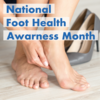Happy Feet, Happy Life: How to Say Goodbye to Hammer Toes

What are Hammer Toes?
Hammer toes is a condition that affects the toes, causing them to become bent and curled. This condition is caused by an imbalance in the muscles and tendons that control the movement of the toes. Hammer toes can affect any toe, but it most commonly affects the second or third toe.
There are two types of hammer toes:
Flexible Hammer Toes: In this type of hammer toes, the toe can still move at the joint. This type of hammer toes is the early stage of the condition and can be treated more easily.
Rigid Hammer Toes: In this type of hammer toes, the toe cannot move at the joint and is fixed in a bent or curled position. This type of hammer toes is more severe and can be more challenging to treat.
What are the Symptoms of Hammer Toes?
Hammer toes are a common foot condition that can cause a range of uncomfortable symptoms. The most common symptom of hammer toes is pain or discomfort in the affected toe, which can be especially noticeable when walking or standing for extended periods of time. This pain is often described as a sharp or throbbing sensation and can be exacerbated by pressure or friction on the affected area.
Another common symptom of hammer toes is the development of corns or calluses on the top of the affected toe or on the ball of the foot. These areas of thickened skin can become painful and tender over time, making it difficult to wear shoes comfortably. In some cases, corns or calluses can even become infected, leading to further complications.
Hammer toes can also cause difficulty in wearing shoes. As the affected toe becomes increasingly bent or curled, it can be challenging to find shoes that fit properly and provide adequate support. This can be especially frustrating for people who need to wear shoes for work or other daily activities.
Some people with hammer toes may experience swelling, redness, or a burning sensation in the affected toe. This can be a sign of inflammation or irritation in the joint and may require medical attention to prevent further complications.
What Causes Hammer Toes?
Hammer toes are a common foot condition that can be caused by a variety of factors. One of the most common causes is wearing ill-fitting shoes. Shoes that are too tight or have high heels can put pressure on the toes and force them into a bent or curled position, leading to the development of hammer toes over time. This is especially true if the shoes do not have enough room in the toe box, causing the toes to be cramped and unable to move freely.
Genetics can also play a role in the development of hammer toes. Some people may be more prone to developing this condition due to their family history or genetic makeup. In these cases, it may be necessary to take extra precautions to prevent hammer toes from developing or worsening over time.
Foot injuries can also lead to hammer toes. When the muscles and tendons in the foot are imbalanced due to an injury, this can cause the toes to become bent or curled. This is especially true if the injury affects the muscles and tendons that control the toes, such as those in the arch of the foot.
Finally, arthritis can also contribute to the development of hammer toes. Arthritis can cause inflammation in the joints, including those in the toes, which can lead to deformities and abnormalities over time. This is especially true if the arthritis is not properly managed with medication or other treatments.
How Can Hammer Toes Be Treated?
Hammer toes can be a painful and uncomfortable condition, but fortunately, there are several treatment options available that can help improve symptoms and prevent the condition from worsening. The treatment plan for hammer toes depends on the severity of the condition, with non-surgical methods being the first line of defence for mild to moderate cases.
One of the most important non-surgical treatments for hammer toes is wearing properly fitting shoes. Shoes that fit well and have a wide toe box can help relieve pressure on the toes and prevent the condition from worsening over time.
Exercises can also be helpful in treating hammer toes. Exercises that stretch and strengthen the muscles and tendons in the foot can help improve the position of the toes and reduce symptoms over time. This can include exercises such as toe curls, toe stretches, and calf stretches.
For immediate relief of pain and swelling, applying ice to the affected area can be helpful. Ice can help reduce inflammation and numb the affected area, providing temporary relief from pain and discomfort.
In some cases, surgery may be required to correct the position of the toes. Surgery for hammer toes may involve removing a portion of the bone or fusing the joints of the affected toes. This is typically reserved for severe cases that do not respond to non-surgical treatment options.
How Can Shoes and Insoles Help Hammer Toes?
Wearing properly fitting shoes and insoles can help relieve the symptoms of hammer toes and prevent the condition from worsening. Here are some tips for choosing shoes and insoles for hammer toes:
Choose shoes with a wide toe box: Shoes with a wide toe box can provide more room for the toes, reducing pressure and friction on the affected area.
Look for shoes with a low heel: High heels can force the toes into a cramped position, worsening hammer toes. Shoes with a low heel or no heel at all can help alleviate the symptoms.
Consider using insoles: Insoles can provide extra cushioning and support to the affected area, reducing pain and discomfort. Orthotic insoles can also help correct the position of the foot, reducing the severity of hammer toes.
Avoid tight-fitting shoes: Tight-fitting shoes can aggravate hammer toes by placing pressure on the affected area. It is important to choose shoes that fit properly and do not squeeze the toes.
What Else Can Assist with Hammer Toes?
There are devices that can assist with hammer toes. Here are some examples:
Toe straighteners: Toe straighteners are devices that can be worn on the toes to help straighten them out. They can be made of silicone, gel, or foam and can be worn inside shoes.
Toe splints: Toe splints are rigid devices that can be worn on the toes to hold them in a straight position. They are typically worn at night and can help correct the position of the toes over time.
Toe cushions: Toe cushions are soft pads that can be worn on the top of the toes or on the ball of the foot to provide extra cushioning and reduce pressure on the affected area.
Toe separators: Toe separators are devices that can be worn between the toes to help spread them apart. They can help alleviate pain and reduce the severity of hammer toes.
By following these tips and seeking appropriate treatment, you can effectively prevent and manage hammer toes, allowing you to put your best foot forward and maintain optimal foot health. Remember to consult with a healthcare professional for an accurate diagnosis and personalized treatment plan.
Final Thoughts
Don't let hammer toes hinder your comfort and mobility any longer. With proper care and attention, you can alleviate the pain, prevent worsening of the condition, and regain control of your foot health. Embrace the freedom to move and wear shoes comfortably by implementing the tips and treatments discussed in this article. Act now and start your journey towards healthier, happier feet. Your feet deserve the best, so step up and put an end to hammer toes for good!
FAQ
Q: What is the connection between hammer toes and bunions?
A: Hammer toes and bunions are both foot deformities, but they affect different parts of the foot. Hammer toes involve abnormal bending of the toe joints, while bunions occur at the base of the big toe.
Q: How do hammer toes and claw toes differ?
A: Hammer toes and claw toes are similar foot conditions, but they differ in the extent of toe deformity. Hammer toes exhibit a downward bend at the middle joint, while claw toes bend both upward and downward, resembling a claw-like shape.
Q: Can high arches contribute to hammer toes?
A: Yes, high arches can contribute to hammer toes. The raised arches can put excessive pressure on the toes, leading to their abnormal bending and the development of hammer toes.
Q: Is there a relationship between hammer toes and neuropathy?
A: Yes, there can be a relationship between hammer toes and neuropathy. Nerve damage caused by neuropathy can affect the muscles and tendons in the feet, leading to imbalances that contribute to the development of hammer toes.
Q: How are corns related to hammer toes?
A: Corns often develop on or between the toes affected by hammer toes. The constant friction and pressure caused by the toe deformity can lead to the formation of painful corns.
Q: Does having hammer toes affect balance?
A: Yes, having hammer toes can affect balance. The misalignment and instability caused by the toe deformity can make it more challenging to maintain proper balance while standing or walking.
Q: Can hammer toes be associated with osteoarthritis?
A: Yes, hammer toes can be associated with osteoarthritis. The altered joint mechanics and abnormal toe positioning can contribute to the development or worsening of osteoarthritis in the affected toes.
Q: Is there a connection between hammer toes and diabetes?
A: Yes, individuals with diabetes are more prone to developing hammer toes due to nerve damage (neuropathy) and poor circulation associated with the condition.
Q: Are hammer toes related to arthritis?
A: Yes, hammer toes can be related to arthritis. Both rheumatoid arthritis and osteoarthritis can contribute to the development of hammer toes by affecting the joints, tendons, and supporting structures of the foot.
Q: How does running impact hammer toes?
A: Running can exacerbate the symptoms of hammer toes due to the repetitive impact and stress placed on the feet. The constant pounding can further misalign the toes and increase discomfort.
Q: Can hammer toes be associated with rheumatoid arthritis?
A: Yes, hammer toes can be associated with rheumatoid arthritis. The inflammatory processes in rheumatoid arthritis can affect the joints and tendons, leading to toe deformities such as hammer toes.
Q: Are hammer toes and plantar fasciitis related?
A: While hammer toes and plantar fasciitis are separate conditions, they can occur together. The altered foot mechanics caused by hammer toes can contribute to the development of plantar fasciitis.
Q: Can hammer toes and athlete's foot be connected?
A: Hammer toes and athlete's foot are unrelated conditions. Hammer toes involve the deformity of the toe joints, while athlete's foot is a fungal infection that primarily affects the skin on the feet.
Q: Is there a relationship between hammer toes and leg cramps?
A: Hammer toes can contribute to leg cramps indirectly. The altered foot structure caused by hammer toes can lead to muscle imbalances and strain, which may contribute to the occurrence of leg cramps.
Q: Can hammer toes cause a burning sensation in the feet?
A: Yes, hammer toes can cause a burning sensation in the affected toes and surrounding areas. The increased pressure and friction on the skin due to the toe deformity can lead to discomfort and a burning sensation.
Q: What do hammer-like toes look like?
A: Hammer-like toes exhibit a characteristic bending of the toe joints, resembling the shape of a hammer. The toes appear bent downward at the middle joint, giving them a hammer-like appearance.
Q: What are the different types of hammer toes?
A: There are two main types of hammer toes: flexible hammer toes, which can still be manually straightened, and rigid hammer toes, which cannot be straightened without medical intervention.
Q: How do hammer toes develop?
Hammer toes can develop due to several factors, including genetics, wearing ill-fitting shoes, muscle imbalances, foot injuries, or underlying conditions like arthritis and diabetes.
Q: Where can I find information on hammer toes?
A: You can find information on hammer toes from reputable medical websites, podiatry resources, or by consulting with a healthcare professional such as a podiatrist.
Q: What is the recovery process for hammer toe and bunion surgery?
A: The recovery process for hammer toe and bunion surgery typically involves wearing a protective boot or cast, limiting weight-bearing activities, and following the post-operative care instructions provided by the surgeon. Physical therapy may be recommended to aid in rehabilitation.














